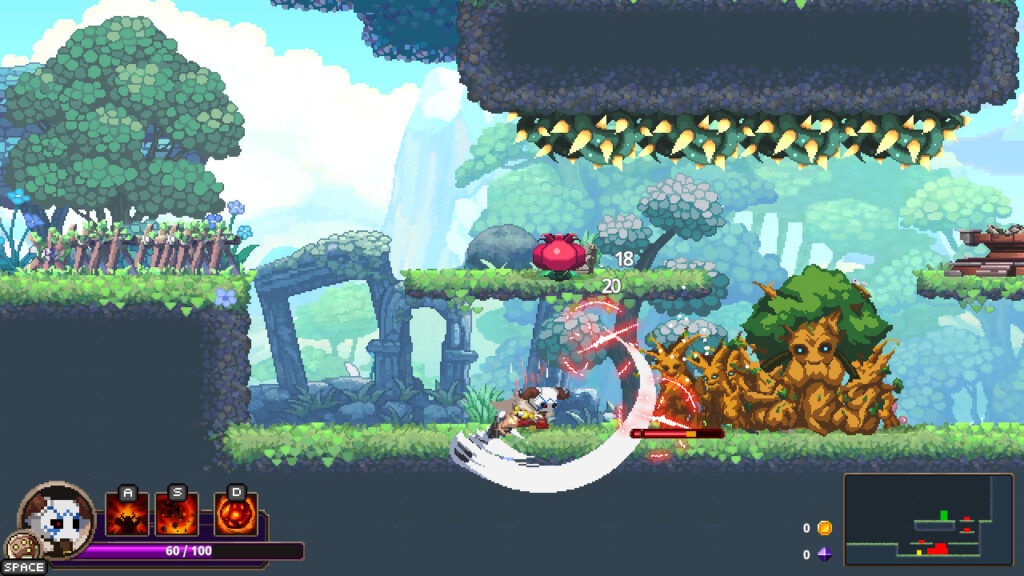
Skul: The Hero Slayer is an upcoming 2D roguelite action-platformer from SouthPAW Games and NEOWIZ. The developers are currently holding a closed beta, and I’m a pretty big fan of roguelites. After a few hours of playing Skul: The Hero Slayer, I’m happy to say that its shaping up to be a pretty solid addition to the genre.
In Skul: The Hero Slayer, you play as a small skeletal guard serving the Demon King when your castle comes under attack. The Adventurers have teamed up with the Imperial Army and the Hero of Caerleon to launch a surprise, decisive invasion of the Demon King’s realm.
With most your fellow skeletal guards defeated, and the most important servants of the Demon King captured, it’s up to you to save your masters and defeat the human coalition attacking your home.
As a roguelite, the general gameplay loop of Skul involves you fighting your way through randomly generated levels. Should you fall in combat, you’ll be forced to start over again from the beginning.
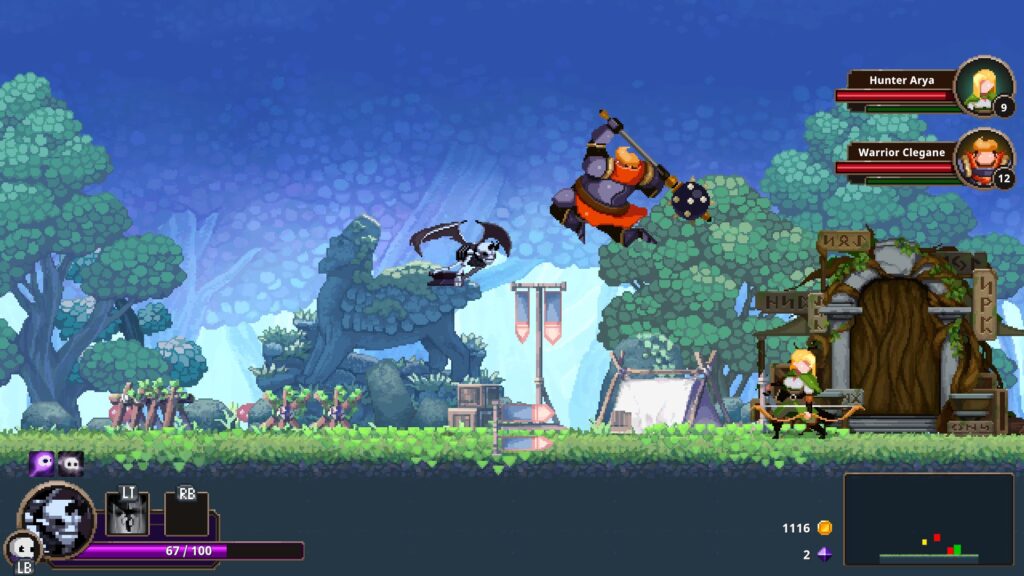
Unlike a lot of modern roguelites, Skul‘s levels aren’t fully procedurally generated. Instead, it seems like the developers made a bunch of hand-crafted areas, and the game randomly combines them together to create each run.
Because of this approach, you’ll see the same, identical areas over and over again. On the other hand, this also allows you to learn level layouts and enemy spawns to better prepare for future attempts.
Every few areas, you’ll encounter a chest room, a vendor, or the remains of one of your fellow skeletons. These brief moments of respite are where you’ll typically find gear and upgrades. The most important of these upgrades are skulls.
By donning the skull of a fallen warrior from the Demon King’s army, you’ll gain access to their abilities and powers. Each skull is effectively a new playable character, and form the foundation of the game’s combo-driven combat.
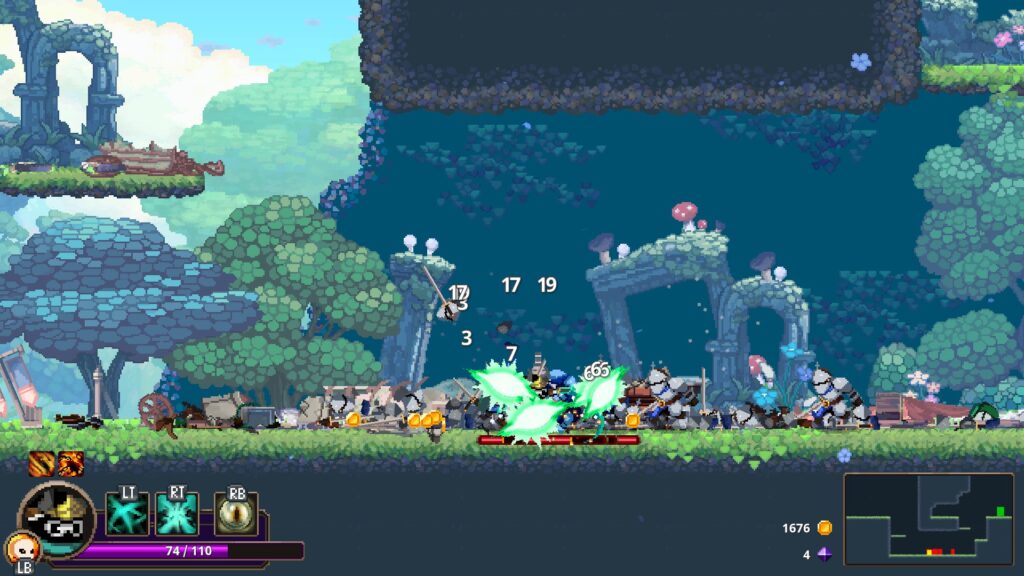
Each skull comes with a variety of passive stats, effects, attack patterns, and skills. The default skull comes with the ability to throw your head at enemies as a ranged attack, and a second skill that lets you teleport to where your head landed. Many of the other skulls you’ll encounter are much more powerful, and drastically alter the way you play.
There’s a speedy Ninja skull that specializes in maneuverability and unleashing quick combos. On the opposite end of the spectrum, Minotaurus is a lumbering brute with extra health, ground slams, and slow but powerful attack combos.
You can have two skulls at once, and can instantly swap between them. In fact, swapping skulls mid-combo is an important gameplay mechanic, as each skull unleashes some sort of special attack when you swap. For example, the Hell Rider skull lights nearby enemies on fire, while Minotaurus lunges forward and uppercuts anything in his path.
Once you swap, there is a cooldown period before you can switch back. All of the game’s special abilities operate on a cooldown instead of mana or some other resource, keeping the game fairly simple and focused on chaining combos over managing resources.

That doesn’t mean that the game is any less challenging, however, because learning which skulls and items complement each other is all part of the game’s strategy.
There is a slight element of randomness to the skulls to keep things fresh. The more common skulls will normally just have one special skill, while the rarer skulls typically have two. One of these skills will always come with the skull by default, like the Hell Rider’s ability to jump on a motorcycle and drive over enemies.
The second skill will be drawn from a random pool of skills associated with that skull. For example, the first time I found the Ninja skull, one of the skills was a forward dash that dealt damage to enemies you passed over. In another run, this dash skill was replaced with a massive shuriken ranged attack that behaved like a boomerang.
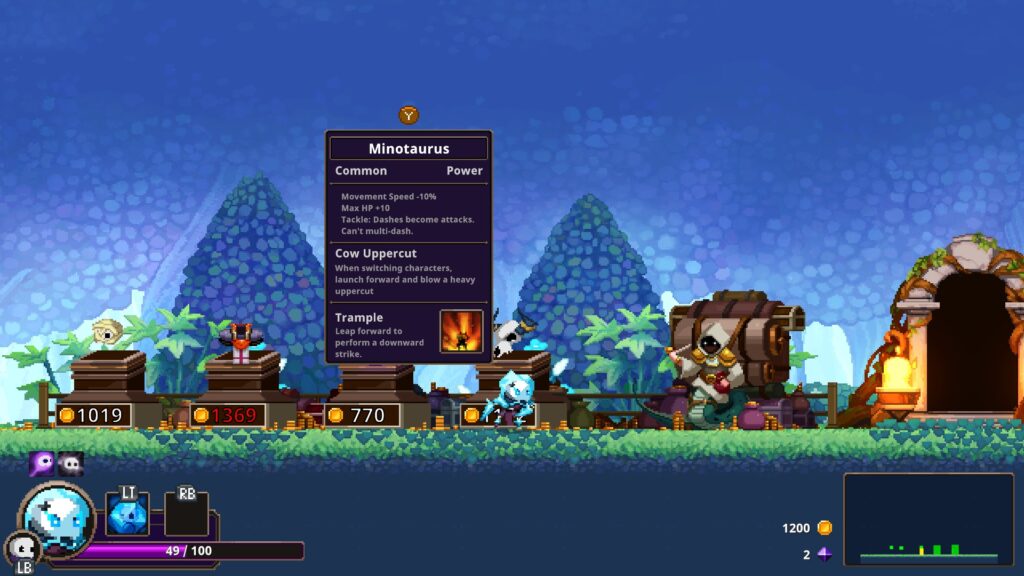
There’s other types of items that will help you in combat besides just the skulls. Some grant a passive bonus while in your inventory, like 10% faster movement speed or 20% damage reduction. Others give you another active skill to use, like a short-ranged teleport or throwing weapon. As with the skull skills, these are based on a cooldown, and you can only have one active skill item at a time.
Based on my first few hours of play, I’d say that the most glaring issues with Skul: The Hero Slayer are in the translation and some aspects of the levels’ pixel art. The developers of the game are Korean, and the translation is a bit shaky in places. It’s by no means bad enough that you can’t figure out what a character is trying to say, but I’ve seen quite a few lines that were just a bit oddly worded.
As for the art, its sometimes difficult to tell what is in the background and what are objects you can actually interact with. There’s been more than a few times where I thought something was in the background, but it was actually an object within the level that you could jump on.
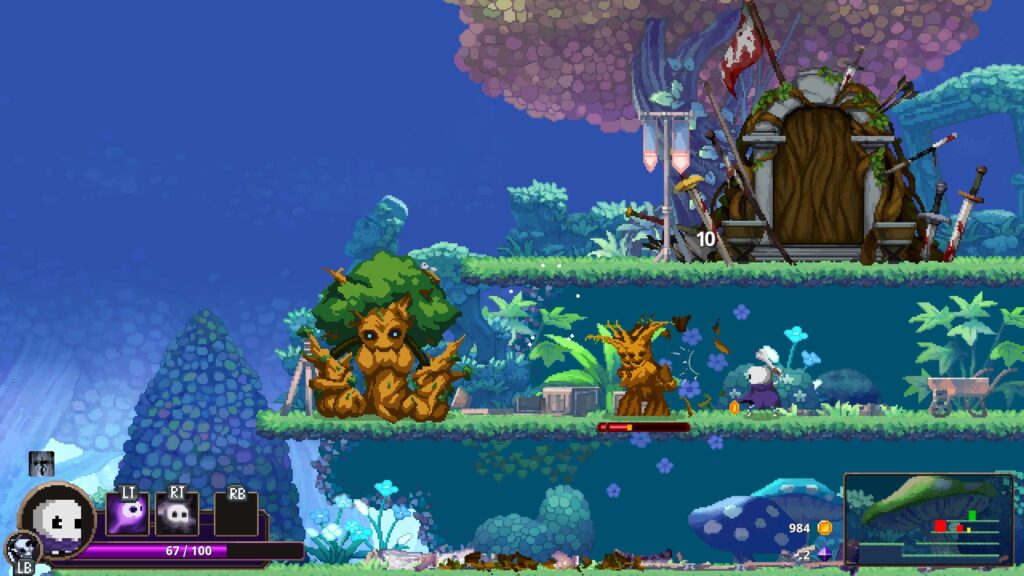
Based on what I’ve played so far, Skul: The Hero Slayer is shaping up to be a very fun action-roguelite. It doesn’t have the same level of depth or complexity as some other games in the genre, but it has fast and fun skill-driven combat, an interesting take on weapons with the skull system, and some really nice pixel art and retro-inspired music.
Skul: The Hero Slayer launches Q1 2020 on Windows PC (via Steam).
Skul: The Hero Slayer was previewed on Windows PC using a preview code provided by Neowiz Games. You can find additional information about Niche Gamer’s review/ethics policy here.